NFPA 70 (NEC) Table (A)(1) The working space for Condition 2 (Exposed live parts on one side of the working space and grounded parts on the other side) is 3'6" for V This would apply to the circuit breaker and electrical power enclosure There should be clearance to open the doors on the generator for servicing Clearance Tables Working Space around Indoor Panel/Circuit Board (NES 3122) Clearance around an Indoor electrical panel (NEC ) Clearance for Conductor Entering in Panel (NES 4085) Clearance between Bare Metal Busbar in Panel (NES 4085) Clearance of Outdoor electrical panel to Fence/Wall (NES ) One of the main things that the NEC specifies is that all electrical panels must have enough room around them that someone working on the equipment will have the room to safely access everything they need

Working Space Requirements For Electrical Panelboards Iaei Magazine
Nec 110.26 working clearance table
Nec 110.26 working clearance table- The minimum width of the working space is 30 in or the width of the equipment, whichever is greater, and all doors or panels must be able to open to 90 degrees or more This is the same as the general requirement found in (A)(2)___ NEC 1103(B) – Overcurrent devices shall be listed for the panelboard they are installed in ___ NEC (A) – The working space about electrical service panel/subpanel shall be at least 3 ft in front of the electrical panel The width of the working space shall be 30" or greater, and the height of the space shall



Www Accessengineeringlibrary Com Binary Mheaeworks 7ffca1aa9864e748 Dfcd5a66d023eddab81e8522ba5ce1bda41b97a92d312afb6c0 National Electrical Code Nec Articles Tables And Data Pdf
Work Space and Guarding The requirements of are conditional, just like the requirements in ; Section (3) (12/7/17) NEC08, section , (3) requires that personnel doors for entrance to electrical rooms housing equipment rated 10A and greater open in the direction of the egress and be provided with panic hardwareExhibits , , and illustrate the two distinct indoor installation spaces required by (A) and (E), that is, the working space and the dedicated electrical space In Exhibit , the dedicated electrical space required by (E) is the space outlined by the width and the depth of the equipment (the
Minimum clearances in front of electrical equipment (600 V (now V) or more); The National Electrical Code Section (A) Working Space states in part, Look in the 60°C, Table for the smallest conductor with an ampacity larger than 667A Working clearance for a panel is 30" wide and 36" deep (in front)Photo 1 Code violation of The definition of equipment in the NEC is "a general term, including fittings, devices, appliances, luminaires, apparatus, machinery, and the like used as a part of, or in connection with, an electrical installation" This is a very broad definition, and when put in the context of working space requirements, likely includes many items not usually thought
• What's the right working clearance for a given installation?Breaker/outlet requirementssizing for outlets used 14 NEC Wire sizes and insulation 14 NEC (B)(16) No open holes/to remain water tight 14 NEC Unused breaker openings filled 14 NEC 4087 Clearances 18' above traffic for overhead dropReference National Electrical Code (NEC) Table (A)(1)) Condition 1—Exposed live parts on one side of the working space and no live or grounded parts, including concrete, brick, or tile walls are on the other side of the working space
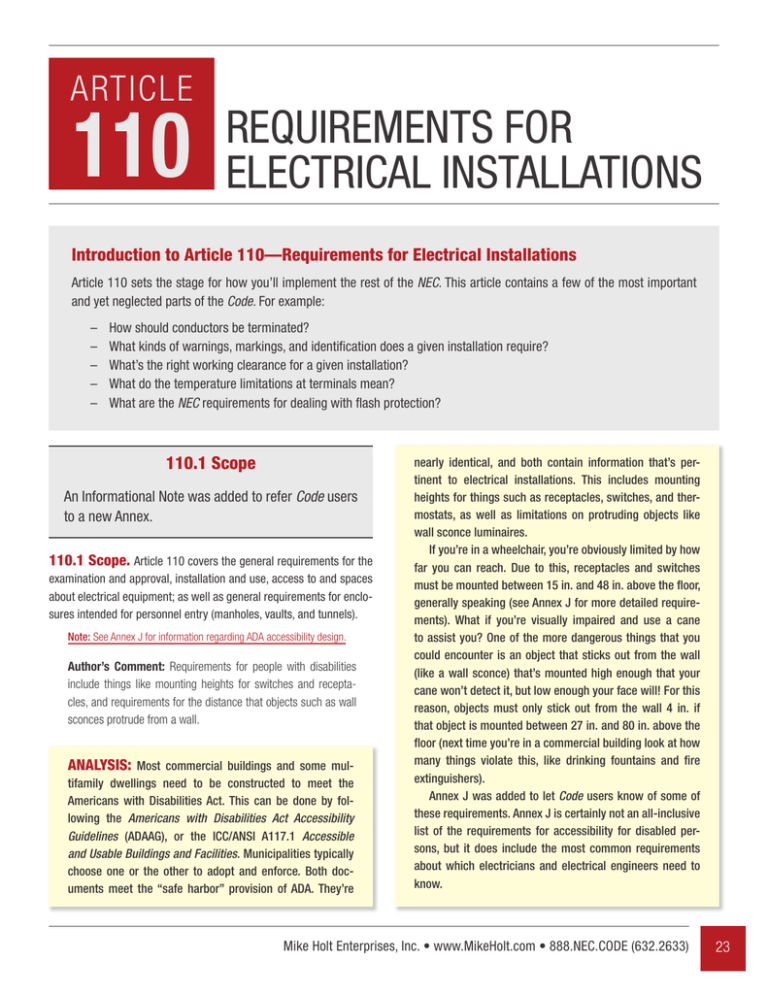



Sample Pages



Www Tooltexas Org Wp Content Uploads 18 08 17 Nec Code 2 Pdf
Depending on interpretation, one could argue the clearances described in (A) are only required where it is "likely" that "examination, adjustment, servicing, or maintenance" are necessary while the equipment is energizedControls is how to meet the required working clearance of electrical equipment as outlined by the National Electrical Code (nec ) table (a)(1) provides the minimum required working space depth for electrical equipment rated volts (to ground) that is likely to be examined or worked on while energized Question Is working clearance in accordance with NEC Section (A) required for dry type transformers?
.jpg?width=900&name=Electrical%20Room%20(2).jpg)



Nec Article 110 34 Electrical Room Basics Electrical Equipment Rated At 1 000 V Or More Article 3 Of 3



Www Mikeholt Com Instructor2 Img Product Pdf 11nec101 1076 Sample Pdf
NEC Table (A) (1), Working Spaces, is a very useful table that details these measurements (see figure 2) The "Conditions" located beneath the table are very informative in order to apply the requirements properly Figures 3, 4, and 5 are also very beneficial towards your understanding of these working space depths Figure 3Table (A)(1) Working Space VoltagetoGround Condition 1 Condition 2 Condition 3 0–150V 3 ft 3 ft 3 ft 151–600V 3 ft 3½ft 4 ft • Condition 1—Exposed live parts on one side of the working space and no live or grounded parts, including concrete, brick, or tile walls are on the other side of the working spaceThat is, some of the requirements are applicable only where the equipment "is likely to require examination, adjustment, servicing, or maintenance while energized" (A) Working Space




Working Space Requirements For Electrical Panelboards Iaei Magazine



Panel Clearances Electrician Talk
Working Space Clearance is dependent on parameters listed in Article for electrical equipment under 1000 Volts In designing electrical equipment under 1000 volts, the Working Space Width is 30 inches, the Working Space Height is 78 inches and Working Space Depth is based on conditions and voltages listed in Table (A) (1)Visit http//wwwMikeHoltcom/14code to explore Mike's complete range of 14 NEC training products For over 35 years Mike Holt Enterprises has specializedCODE ITEM CODE SECTION Where required 15 IPC 1003 6" water seal 15 IPC 1003 342 Relief vent 15 IPC Location 15 IPC 1003 10



Art109




Electrical Panel Clearance Requirements The Garage Journal
Some of the working space requirements found in Section (NEC05) include (A) Working Space Working space for equipment operating at 600 volts , nominal, or less to ground and likely to require examination, adjustment, servicing, or maintenance while energized shall comply with the dimensions of (A)(1), (2), and (3) or as If you have a room that meets the above requirements, (2) states that these electrical rooms must have an entrance/egress that is at least 24 inches wide and 65 feet tall at EACH end of the working space Working space requirements appear in Table (A) (1) Another addition appearing in here is that the equipment doorsAnswer # 1 NEC (A) (1) & (2) Yes, this may be a problem Meter Sockets require the same working clearances as electrical distribution per NEC (A) (1) & (2) Most utility meter manuals throughout Wisconsin also require the same clearances specified in NEC for meter sockets As an option, NEC
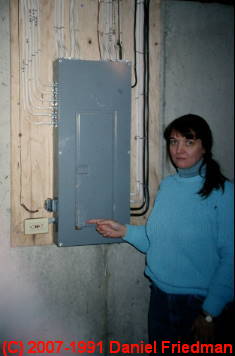



Electrical Panel Equipment Working Space Clearance Distances U S Nec Article 110 26
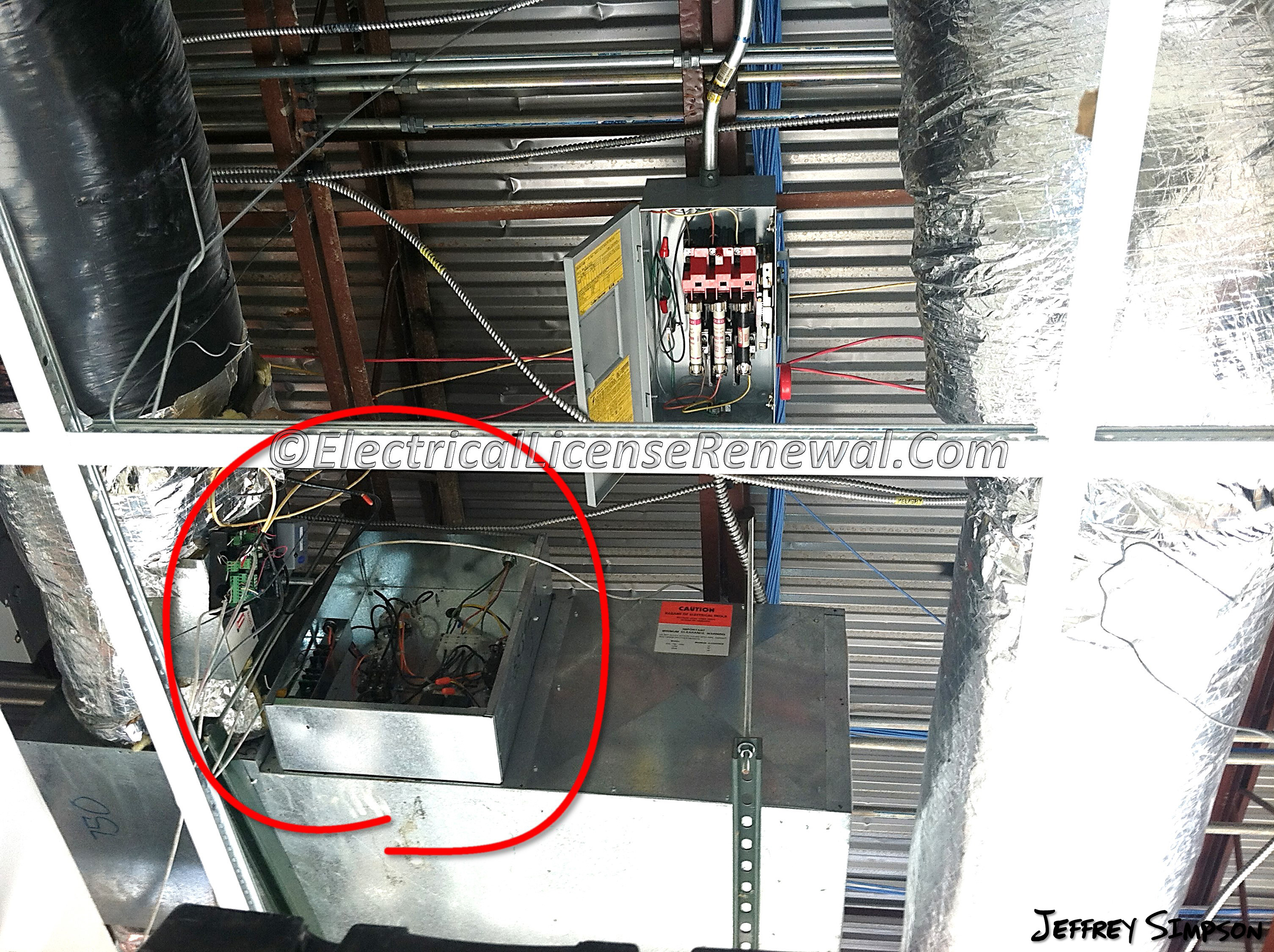



110 26 A 4 Limited Access
The national electric code • nec • adopted by the louisiana legislature as law • not a design manual • is a minimum standard nec article working space shall be provided and maintained about all electric equipment likely to require while energized working space shall beProtection and the clearance is 28" This is deemed ok since the barricade is removable I have tried explaining that is one article, and that and (A) go together I know that he is only going to abide by what an inspector says Code reference NEC article 100, NEC Table (A)(1), Working Spaces, is a very useful table that details these measurements (see figure 2) The "Conditions" located beneath the table are very informative in order to apply the requirements properly Figures 3, 4, and 5 are also very beneficial towards your understanding of these working space depths



Www Ltrc Lsu Edu Ltc 11 Pdf National electric code clear workspace requirements Pdf



Q Tbn And9gcqkkcyyfzdwu78lzw9uw5uk5tgqnn1j93hjfqj2 2myghfchgsv Usqp Cau
The clearances in Table (A) (1) deal with two voltage levels 0 to 150 volts and more than 150 to 600 volts Condition 1 covers situations where there are energized exposed live parts in front of electrical personnel and, for instance, an insulated wall behind the worker's back NEC Workig Clearance Requirements NEC Workig Clearance Requirements enverd (Electrical) (OP) 7 Jun 12 1106 Reviewing A1 and associated table the working space depth is clear on its requirementsAs shown in Table 10 of Chapter 9, must be identified for the conductor class Figure 110–6 12 Mike Holt's Illustrated Guide to Essential Rules of the National Electrical Code, Based on the 11 NEC




Adequate Clearance Electrical Inspections Internachi Forum



Seips Tech Tips Workspace Clearances For Solar Pv Systems Sei Professional Services
Egress and working space for rooms containing electrical overcurrent devices, switching devices, or control devices shall be in compliance with the International Fire Code and Section of NFPA 70 Background 15 IFC 6053 Working space and clearance A working space ofnot less than 30 inches (762 mm) in width, 36Height of working space around electrical equipment NEC (A) (3) For installations built before , the height of the working space must be 625 ft For installations built on or after , the height must be at least 65 ft from the floor, grade, or platform It can't be lower than the height of the equipment The safety of maintenance electricians depends on the consideration of adequate workspace around electrical equipment For safe equipment operation and maintenance, you must design and install all electrical equipment with "sufficient" access and workspace In the case of the NEC, sufficient means you must meet certain depth, width, and height requirements as outlined in




Adequate Workspace Keeps Electricians Safe Ec M




Listen To Electrical Podcasts On Spreaker
Answer No The National Electrical Code Section (A) Working Space states in part, "Working space for equipment operating at 600 volts, nominal, or less to ground and likely to require examination, adjustment, servicing, or(A)(1) describes the minimum clear distance required in front of electrical equipment, and is broken down into three categories according to the nominal voltage to ground in Table (A)(1) and the conditions encountered on each side of the working space For example if we have a 8 volt panel on one side and a bare NEC requires working clearance in front of equipment likely to require calibration, testing, or adjustment while energized This means a 30 by 36 inch space (or larger) in front of panels, access panels on HVAC equipment and fused disconnects Does this requirement extend to non




General Installation Requirements Part Xxxv Article 110 Electrical Contractor Magazine



1
Sections and of the NEC require working clearance in front of any equipment that may require examination, adjustment servicing, or maintenance while energized This requirement, intended to allow an electrician to safely work on energized equipment, applies to switchgear, distribution panels, motor control centers, standalone The entrance does not have to be directly in front of the electrical equipment Per section (2)(a) it has to be continuous and unobstructed An example of a violation would be the electric equipment positioned in a room where working space would be behind the equipment where you could be trapped between the equipment and the exit door4 A minimum of 3 feet must be provided in front of all metering installations See NEC (A) 5 All 100 Amp or 0 Amp meter sockets shall contain the horntype bypass for singlephase or network installations, be ringless, UL listed, and not have covers over the meters 6 6'6" OH headroom working space required per NEC (A) 7
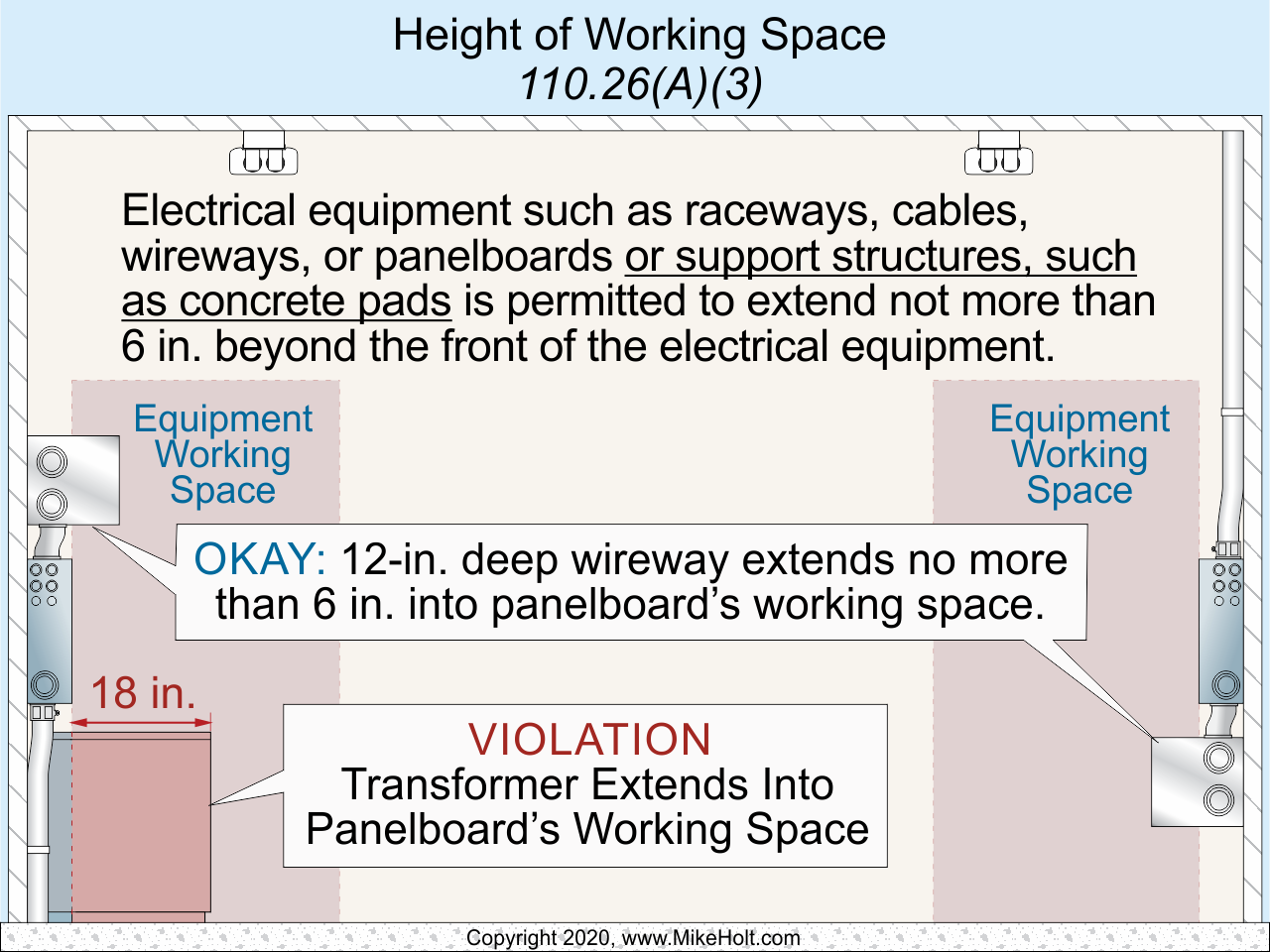



General Requirements Of The Nec Ec M




Interdisciplinary Coordination And Lessons Learned Data Center Design Insights
This is a problem with the code wording in The counter top receptacles the are required by are in violation of The CMP has been very reluctant to accept any changes in the wording of This section really needs some work as in RE NEC Article (A)(1) Depth of working space condition 3 davidbeach (Electrical) 17 Dec 16 0131 If the inspector every has to measure anything to determine if there's adequate clearance, there isn't adequate clearanceOSHA Table S1 These requirements apply to the width, depth, and height of these working spaces To avoid body contact with energized parts when maintaining / servicing electrical equipment, a minimum of 30 inches is required in front of



Http Www Teces Org Docs 443 Pdf



Www Accessengineeringlibrary Com Binary Mheaeworks 7ffca1aa9864e748 Dfcd5a66d023eddab81e8522ba5ce1bda41b97a92d312afb6c0 National Electrical Code Nec Articles Tables And Data Pdf
Of course the first place to start is with National Electrical Code required workspace clearances, found in NEC Section and Table (A)(1) The requirements in these sections were expanded in the last NEC code cycle to apply up to 1000V, whereas in the 14 NEC requirements for over 600 volts were in a separate Section, and of the NEC gives the clearances for electrical equipment Table (A)(1) gives the depth In this table for voltages of 150 to ground we must have 36 inches of depth (A) (2) Width of Working Space The width of the working space in front of the electric equipment shall be the width of the equipment or 750 mm (30 in(2) Large Equipment For equipment rated 10 amperes or more and over 18 m (6 ft) wide that contains overcurrent devices, switching devices, or control devices, there shall be one entrance to and egress from the required working space not less than 610 mm (24 in) wide and m (6 ½ ft) high at each end of the working space
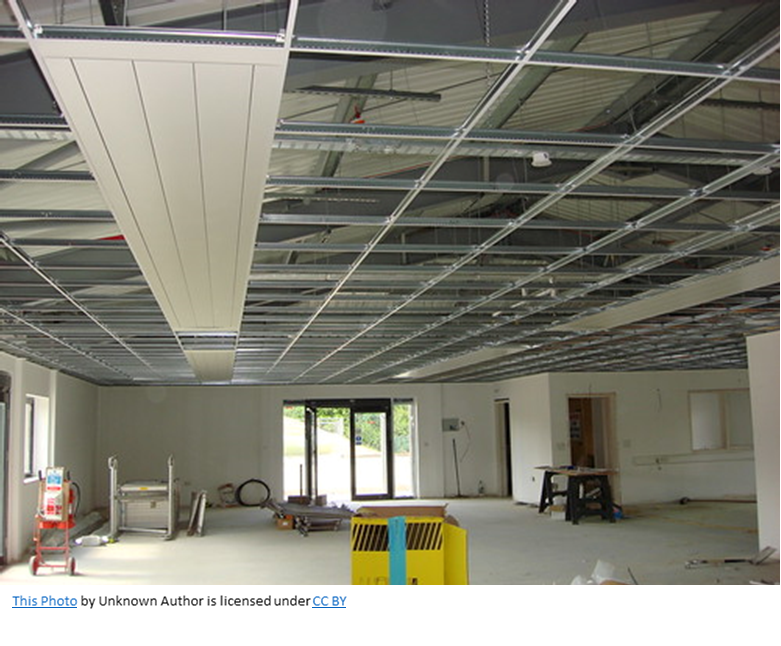



New Rules For Spaces With Limited Access Nec 17 110 26 A 4 Jade Learning




Working Space Requirements For Electrical Panelboards Iaei Magazine
NEC Table , updated from 600 V to 1000 V in 17 Minimum clearances are established for work spaces in front of high voltage electrical equipment such as switchboards, control panels, switches, circuit breakers, switchgear and motor controllers Where the depth of the working space is twice that required by (A)(1), a single entrance shall be permitted It shall be located so that the distance from the equipment to the nearest edge of the entrance is not less than the minimum clear distance specified in Table (A)(1) for equipment operating at that voltage and in that conditionArticle Requires that sufficient access and working space shall be provided and maintained around all electrical equipment to permit ready and safe operation and maintenance of such equipment Table (A) Defines requirements for minimum depths for working space in lowvoltage (0 600 V) installations



Q Tbn And9gcqdt2hrdjclpsxkyqeef Ujydyrchsmjfxu8lhuxflkpfjhsedr Usqp Cau



1
To gain adequate clearance to avoid harm from the live parts A few key NEC articles that address this issue are Article —Requires that sufficient access and working space shall be provided and maintained around all electrical equipment to permit ready and safe operation and maintenance of such equipment



Www Nfpa Org Assets Files Aboutthecodes 70 70 016 Nec Frreport Pdf
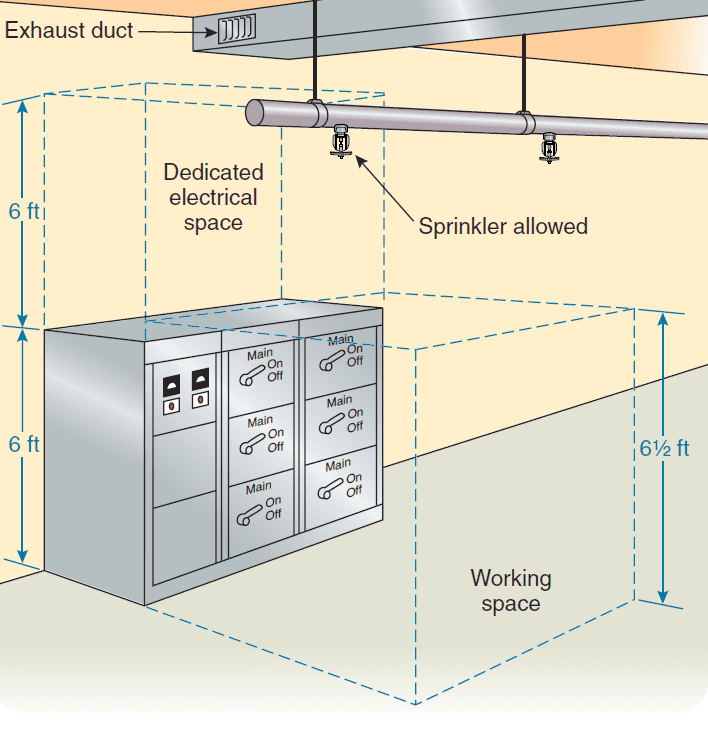



Where Can Panelboards And Load Centers Be Located In My Building Wgi




Working Space For Electrical Equipment Iaei Magazine



Panel Clearances Electrician Talk



2 9 2 Electrical Equipment




Transformer Installation Page 3




Working Space For Electrical Equipment Iaei Magazine
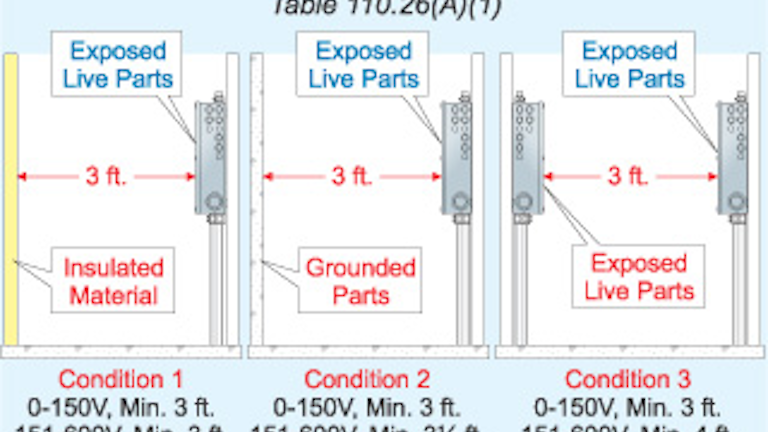



Adequate Workspace Keeps Electricians Safe Ec M




Working Space Requirements For Electrical Panelboards Iaei Magazine



Www Citynmb Com Documentcenter View 61 Electrical Resident Inspection Guide




Working Space Requirements For Electrical Panelboards Iaei Magazine




General Installation Requirements Part Xxxv Article 110 Electrical Contractor Magazine



Www Mikeholt Com Instructor2 Img Product Pdf 11nec101 1076 Sample Pdf




Doe Handbook Electrical Safety General Requirements Rf Cafe




Requirements For Electrical Installations Pdf Free Download



Working Clearance Electrician Talk
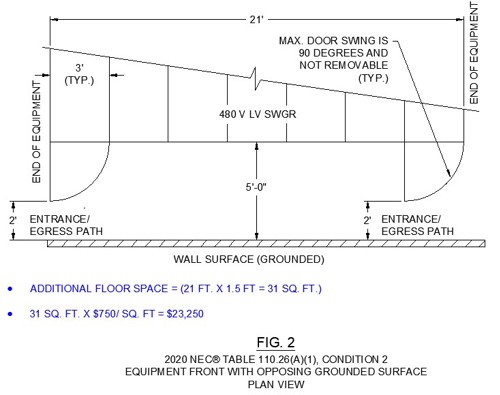



Afpm Summit Nec Revision Reduced Risk For Electrical Workers




Afpm Summit Nec Revision Reduced Risk For Electrical Workers




Working Space For Electrical Equipment Iaei Magazine



Art109




Working Space About Electrical Equipment Nec 14 110 26 23min sec Youtube




Working Space For Electrical Equipment Iaei Magazine
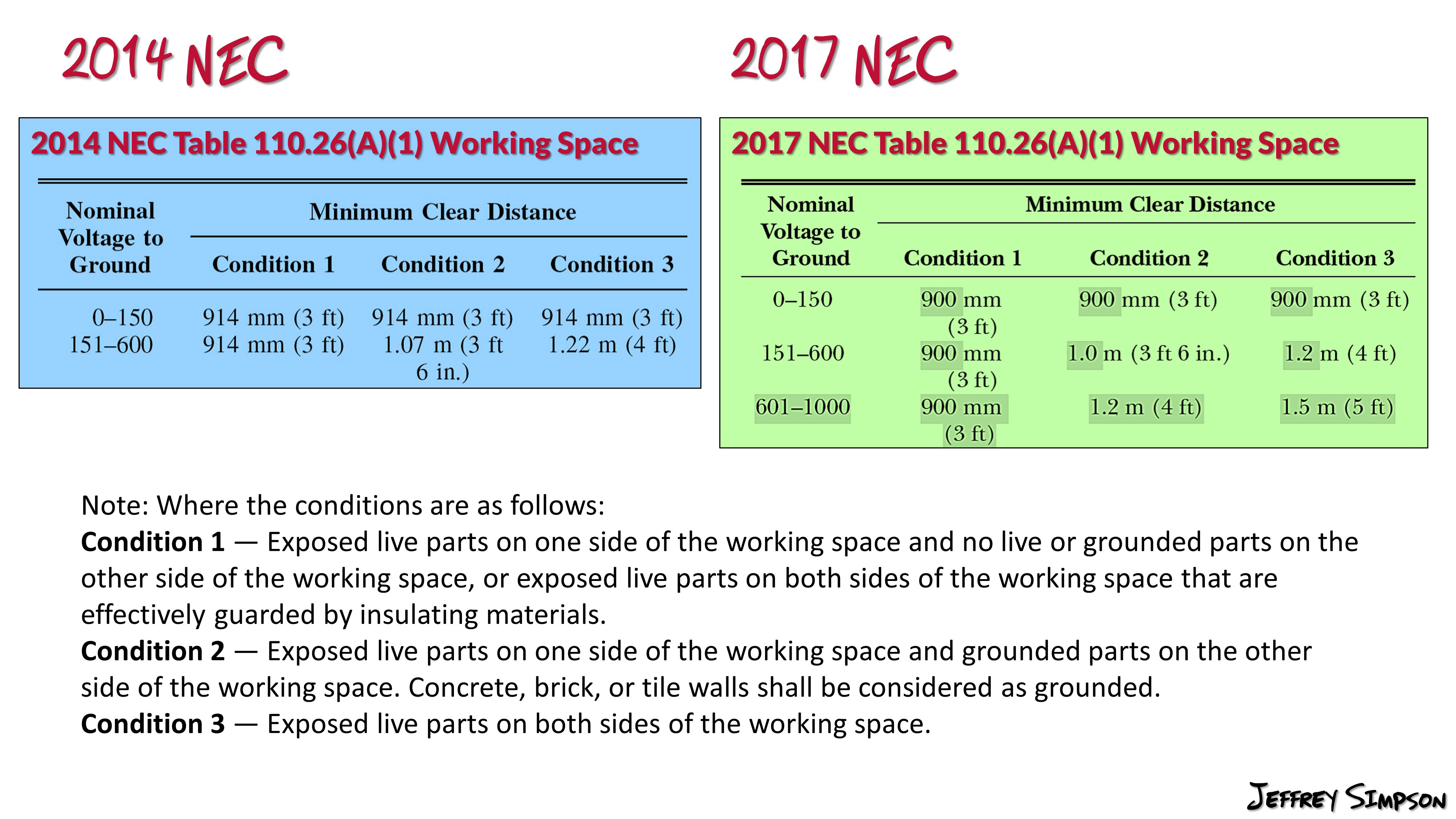



Table 110 26 A 1 Working Spaces



Www Mikeholt Com Instructor2 Img Product Pdf 11nec101 1076 Sample Pdf



Www Mikeholt Com Instructor2 Img Product Pdf 11nec101 1076 Sample Pdf



Oshpd Ca Gov Document Seminar Electrical




5 3b Depth Of Working Space 110 26 A 1 And Table 110 26 A 1 Condition 2 Youtube




General Installation Requirements Part Xvii Electrical Contractor Magazine
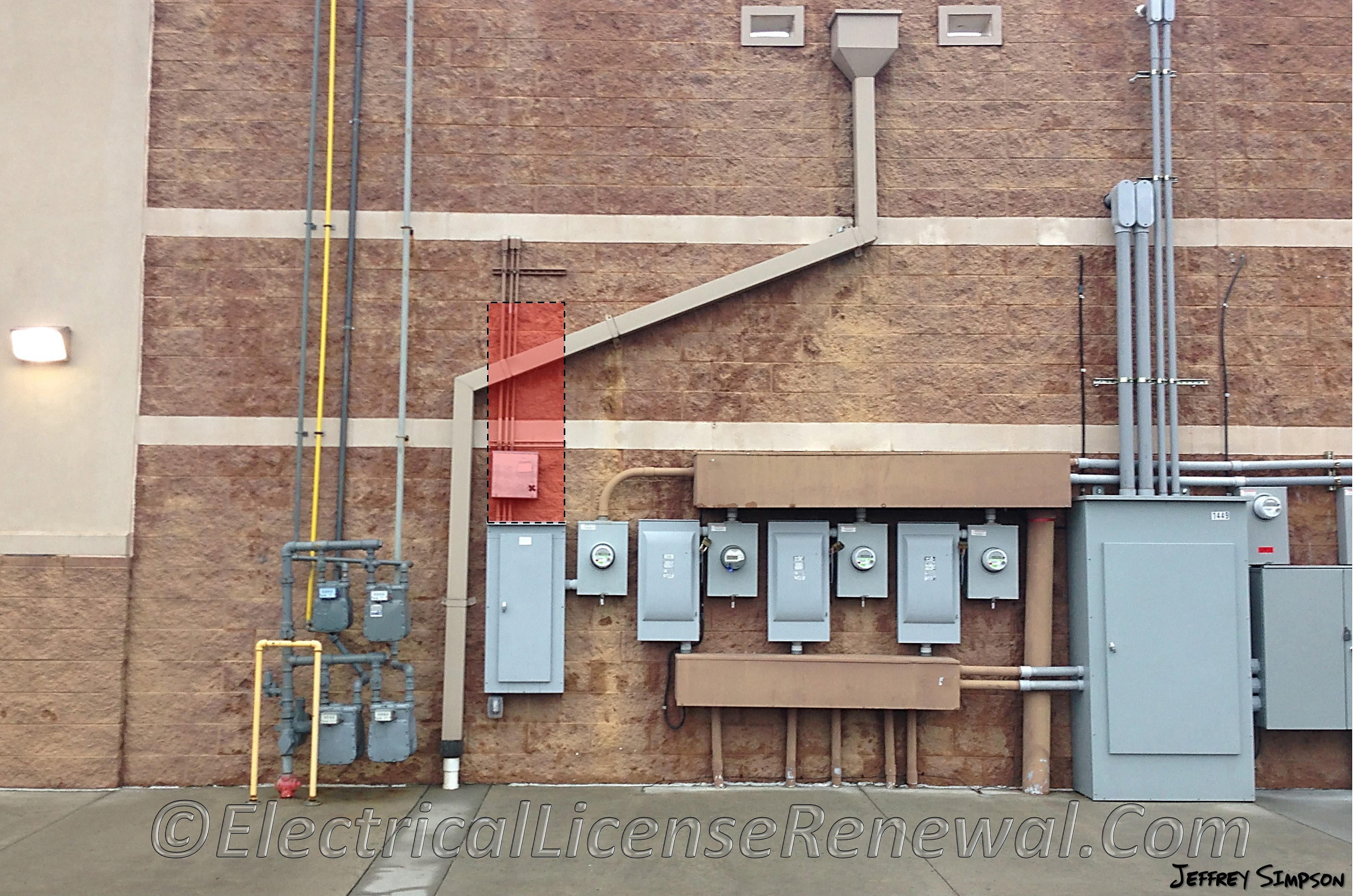



110 26 E 2 Dedicated Equipment Space Outdoors



Www Eaton Com Content Dam Eaton Products Medium Voltage Power Distribution Control Systems Vacclad W Pages Electrical Equipment Floor Space Ap0007en Pdf




General Installation Requirements Part Xxxiii Electrical Contractor Magazine




Working Space Requirements For Electrical Panelboards Iaei Magazine
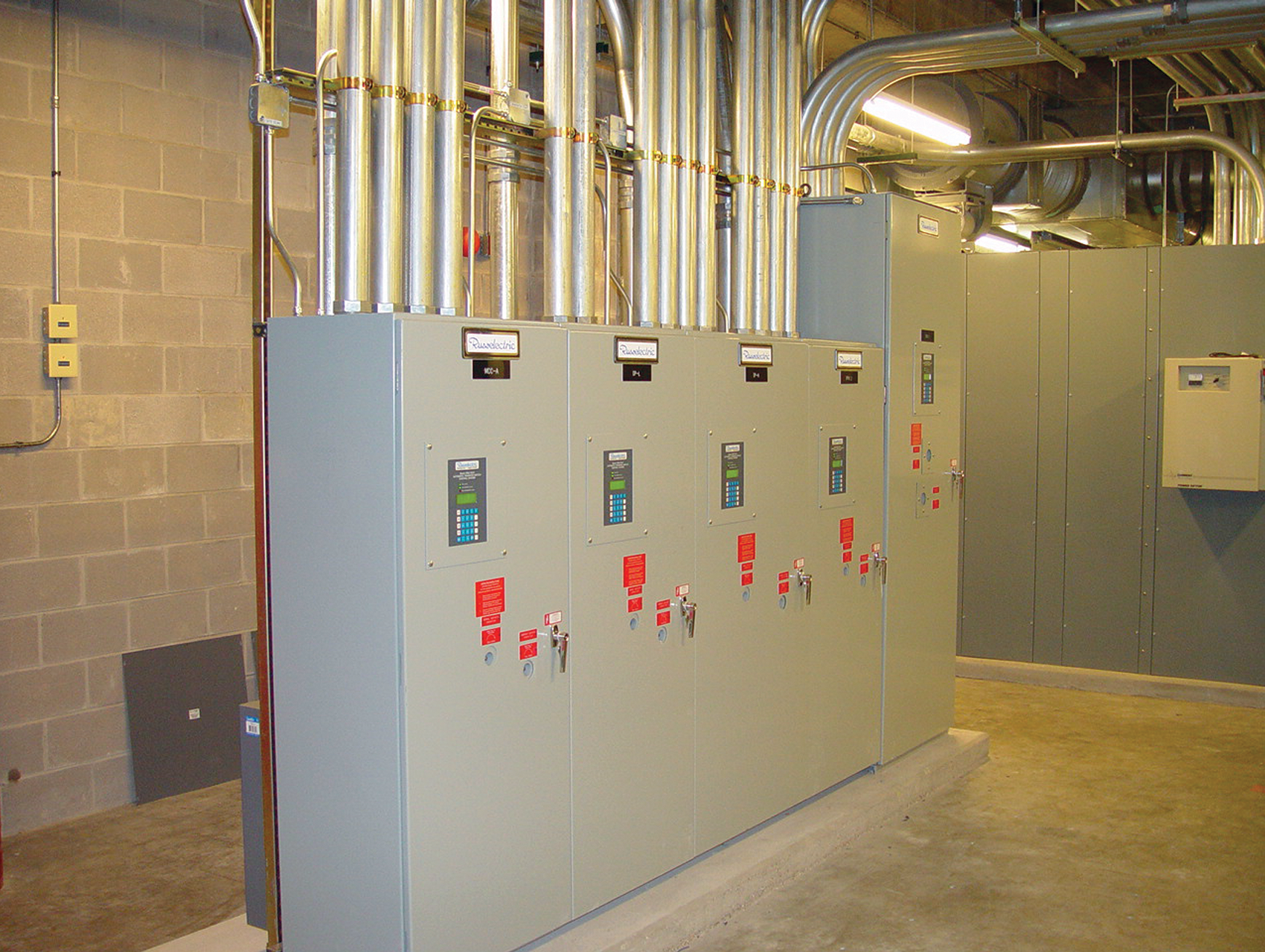



Working Space For Electrical Equipment Iaei Magazine
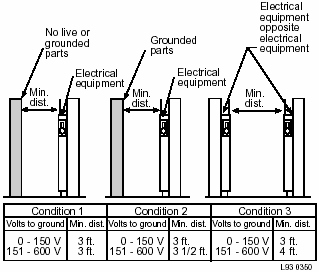



Doe Handbook Electrical Safety General Requirements Rf Cafe



Www Siouxfalls Org Media Documents Building 14 14 Nec City Ordinance And Commentary Pdf Item M



Www Mikeholt Com Instructor2 Img Product Pdf 17bk 1474 Sample Pdf




How Much Working Space Is Enough Ec M



Oshpd Ca Gov Document Seminar Electrical



Nec Article 6 11 50 15 54 Asme A17 Series Of Elevators Escalator Standards
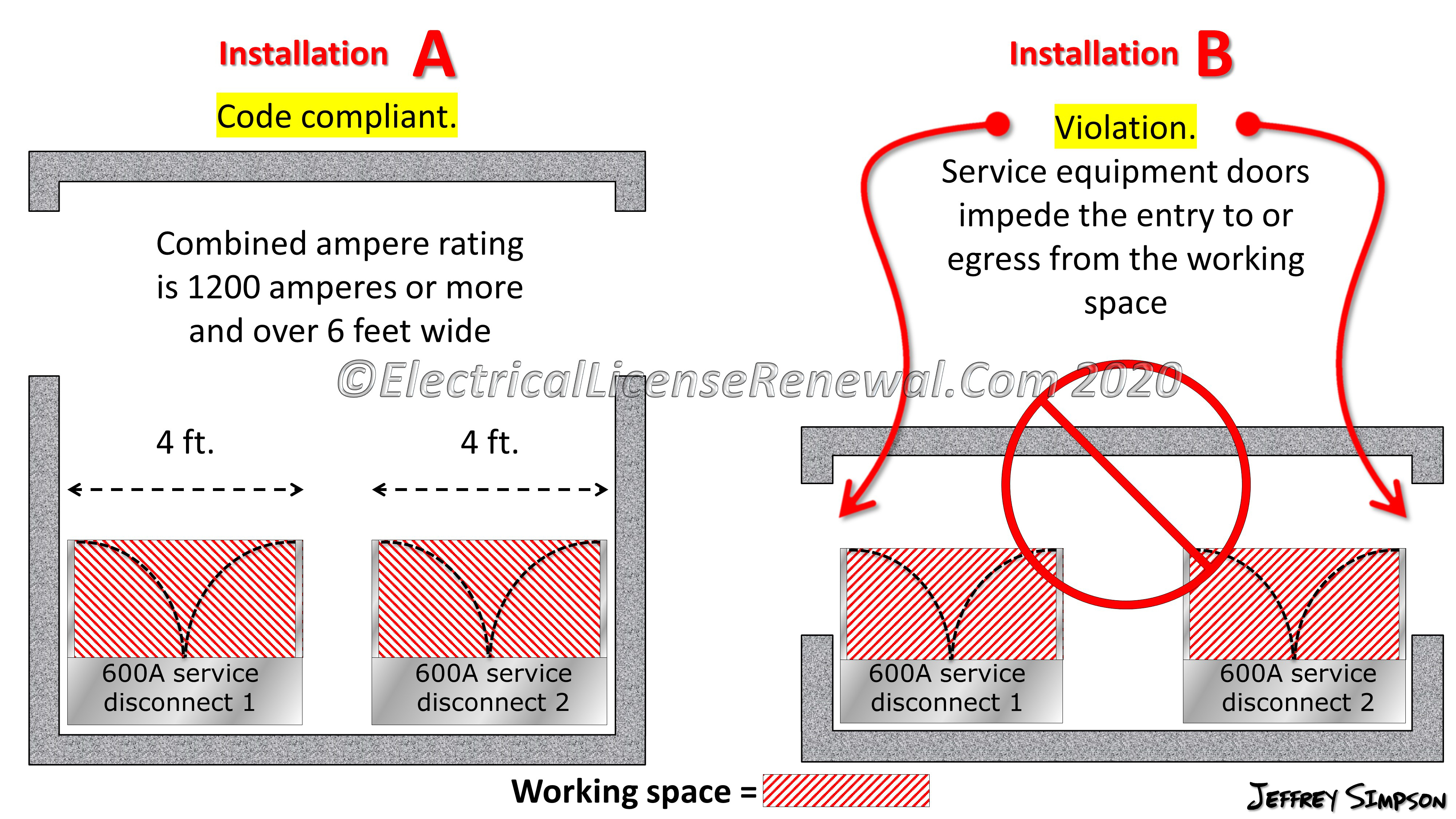



110 26 C 2 Large Equipment




Dedicated Equipment Space Nec 110 26 E 1 And E 2 Part 1 Of 3 Youtube




110 32 Workspace About Equipment
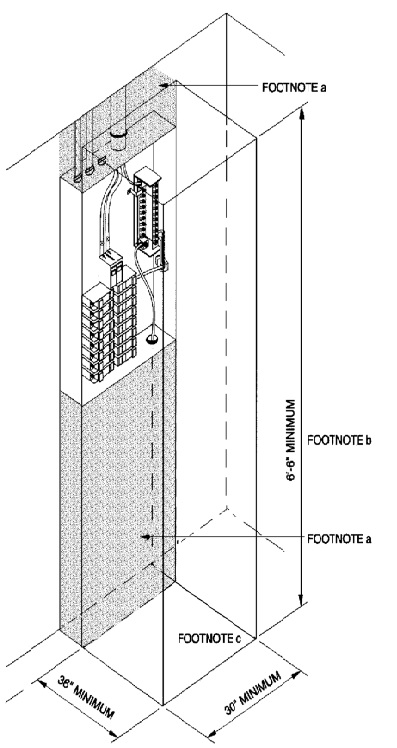



15 Virginia Residential Code Icc Digital Codes



Www Mikeholt Com Instructor2 Img Product Pdf 11nec101 1076 Sample Pdf
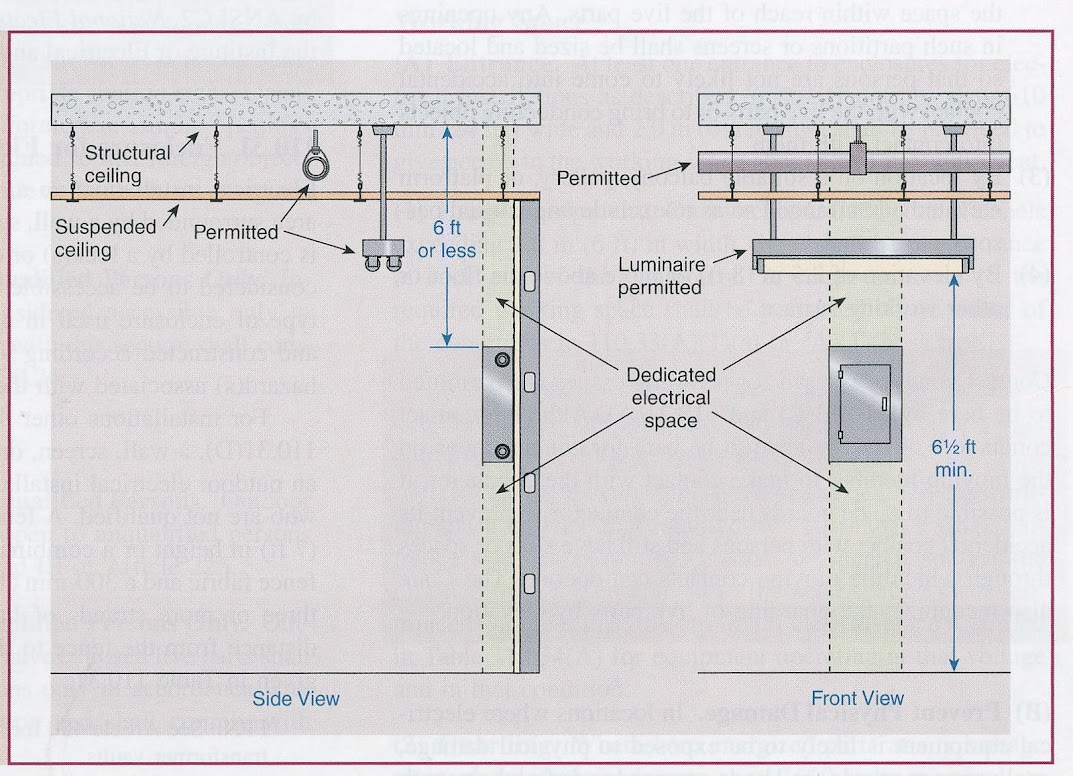



Inspectionnews Home Inspection




Electrical Panel Clearance Issues Electrical Inspections Internachi Forum



Http Www Teces Org Docs 443 Pdf



Nec Article 110 Guide 11 Holt Nec Article 110 Guide 11 Holt Docsity
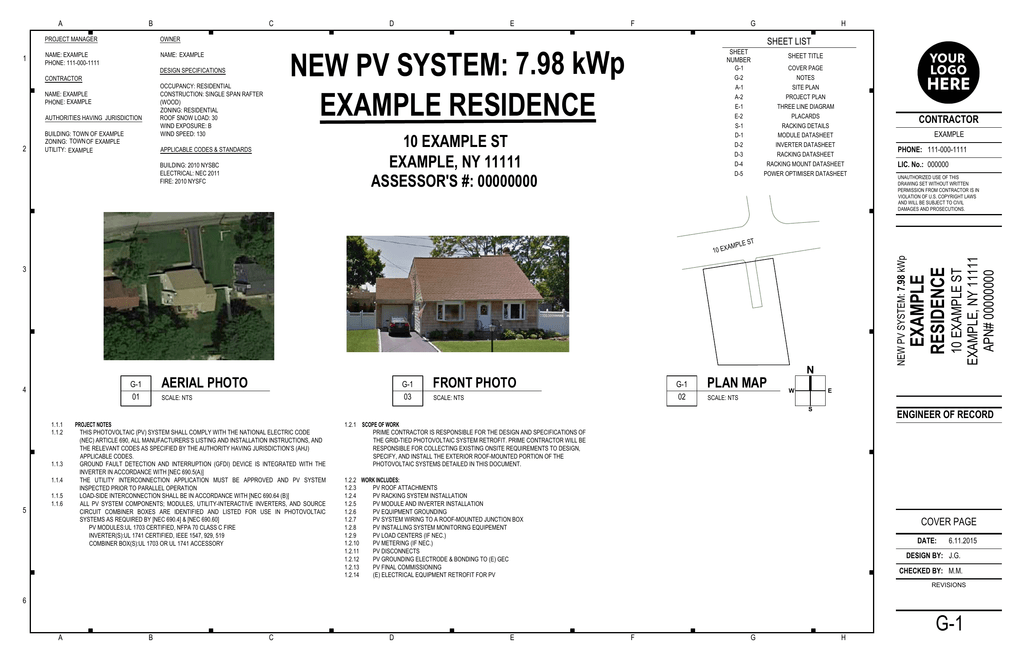



Example Pdf Manualzz
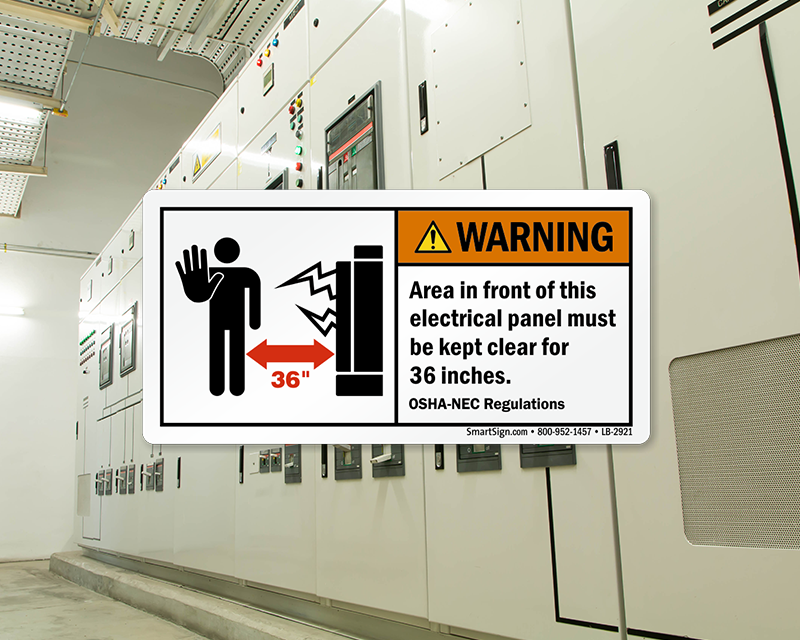



Minimum Clearance Around Electrical Panels Carrying 600 Volts Or Less Mysafetysign Blog




Codeology Nec Code Book Arrangement Flashcards Quizlet



Www Ltrc Lsu Edu Ltc 11 Pdf National electric code clear workspace requirements Pdf




Equipment Location And Clearances Upcodes




Nec 17 Code Changes Update



Www Mikeholt Com Instructor2 Img Product Pdf 11nec101 1076 Sample Pdf




Nec Working Clearance Youtube



Http Tazewellcountyva Org Wp Content Uploads 16 01 11 Nec 12 Irc Electrical Code Changes Pdf



Art109




Current Affairs Keep In The Clear



Www Rockymountainpower Net Content Dam Pcorp Documents En Pp Rmp Electric Service Requirements Esr Ch4 Pdf



Www Mikeholt Com Instructor2 Img Product Pdf 11nec101 1076 Sample Pdf
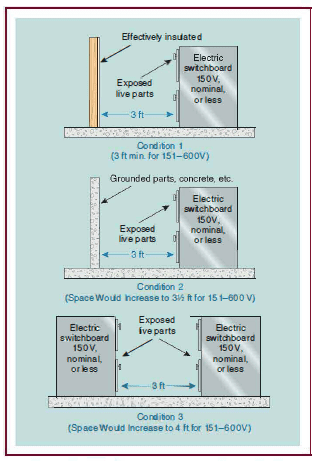



Where Can Panelboards And Load Centers Be Located In My Building Wgi




How Much Working Space Is Enough Ec M
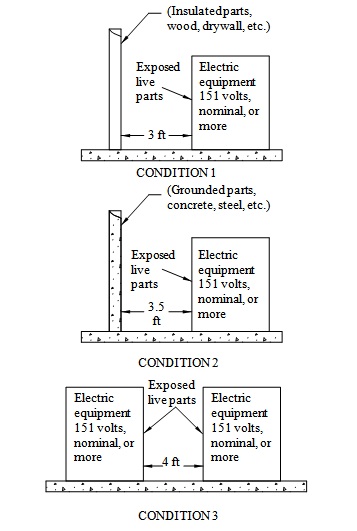



Consulting Specifying Engineer Integrated Design Of Electrical Rooms




Nec Working Space Jobs Ecityworks




110 26 Pdf Door Voltage




Electrical Panel Equipment Working Space Clearance Distances U S Nec Article 110 26



2



Working Clearance Electrician Talk




General Installation Requirements Part Xxii Electrical Contractor Magazine



Www Rockymountainpower Net Content Dam Pcorp Documents En Pp Rmp Electric Service Requirements Esr Ch4 Pdf
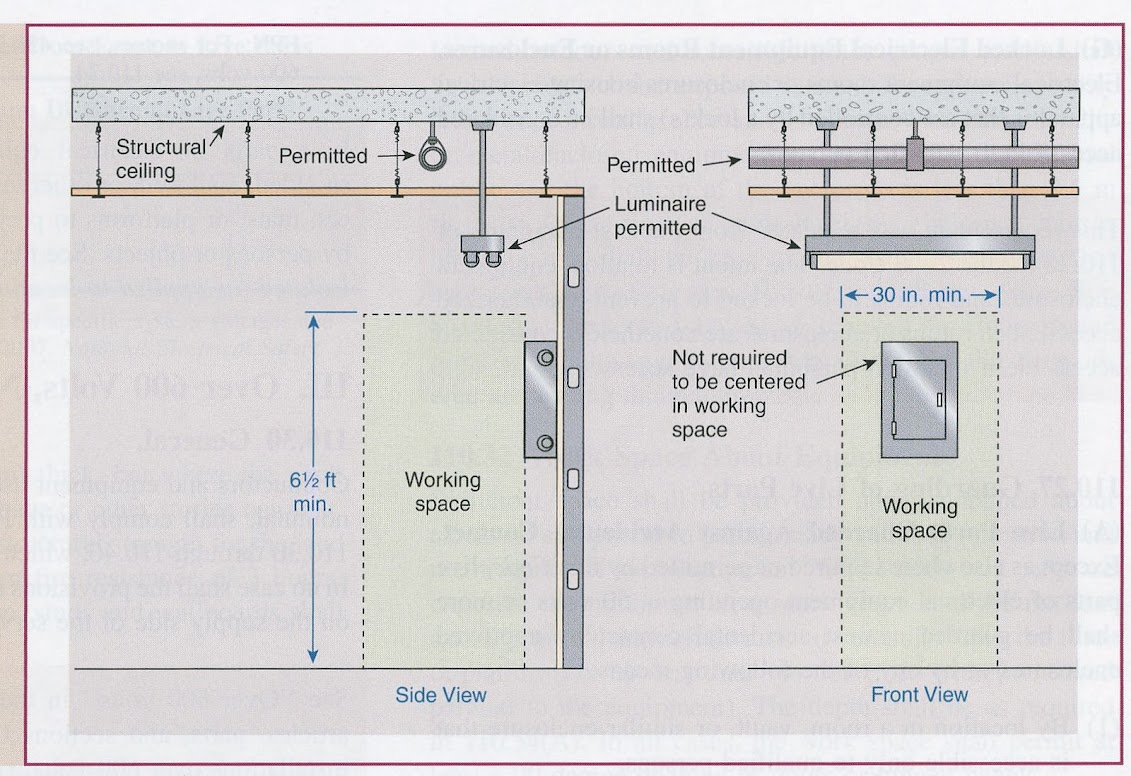



Inspectionnews Home Inspection
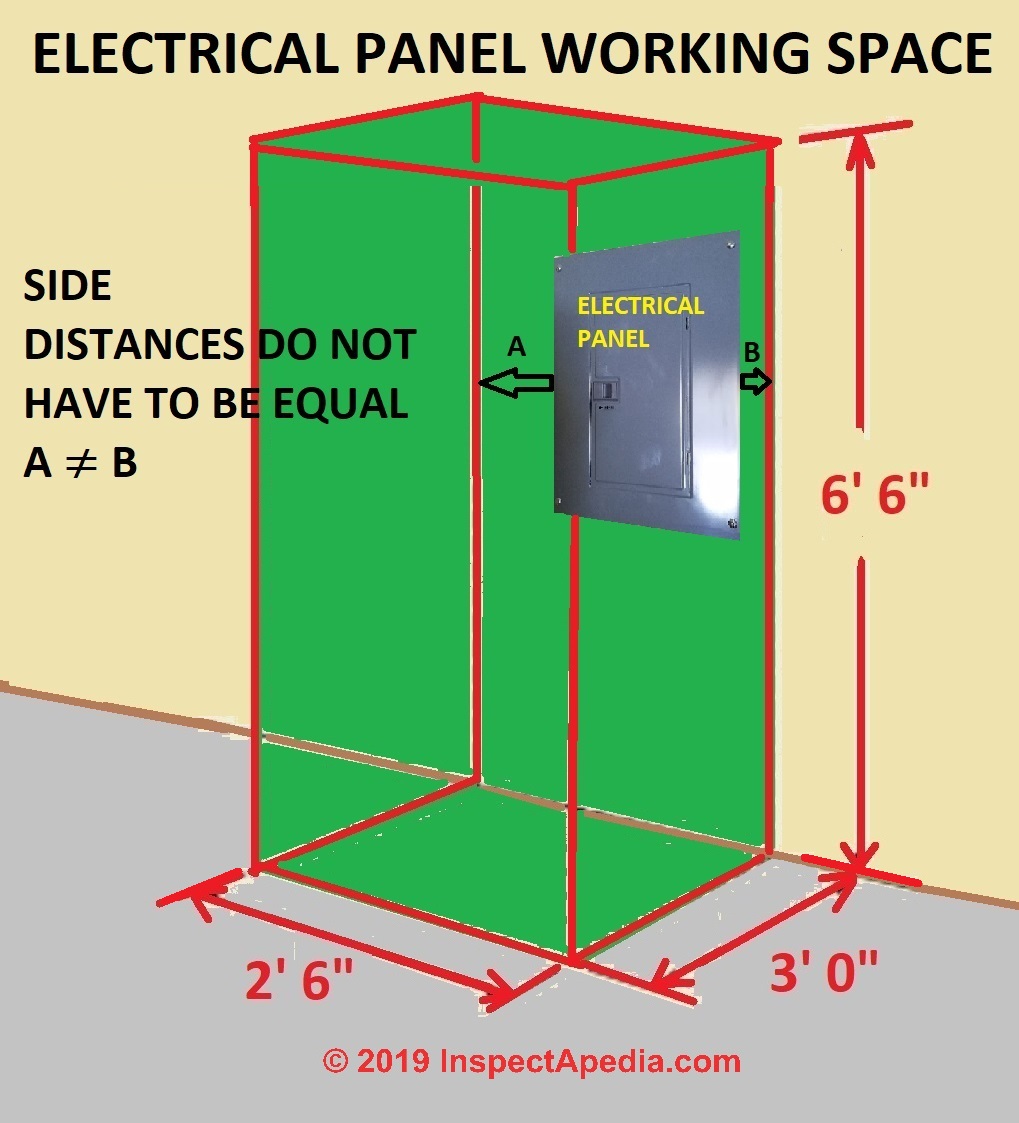



Electrical Panel Equipment Working Space Clearance Distances U S Nec Article 110 26




Electrical Faq S



Www Mikeholt Com Instructor2 Img Product Pdf 11nec101 1076 Sample Pdf



Www Eaton Com Content Dam Eaton Products Medium Voltage Power Distribution Control Systems Vacclad W Pages Electrical Equipment Floor Space Ap0007en Pdf




Requirements For Electrical Installations Pdf Free Download




Working Space About Electrical Equipment Nec 14 110 26 23min sec Youtube



0 件のコメント:
コメントを投稿